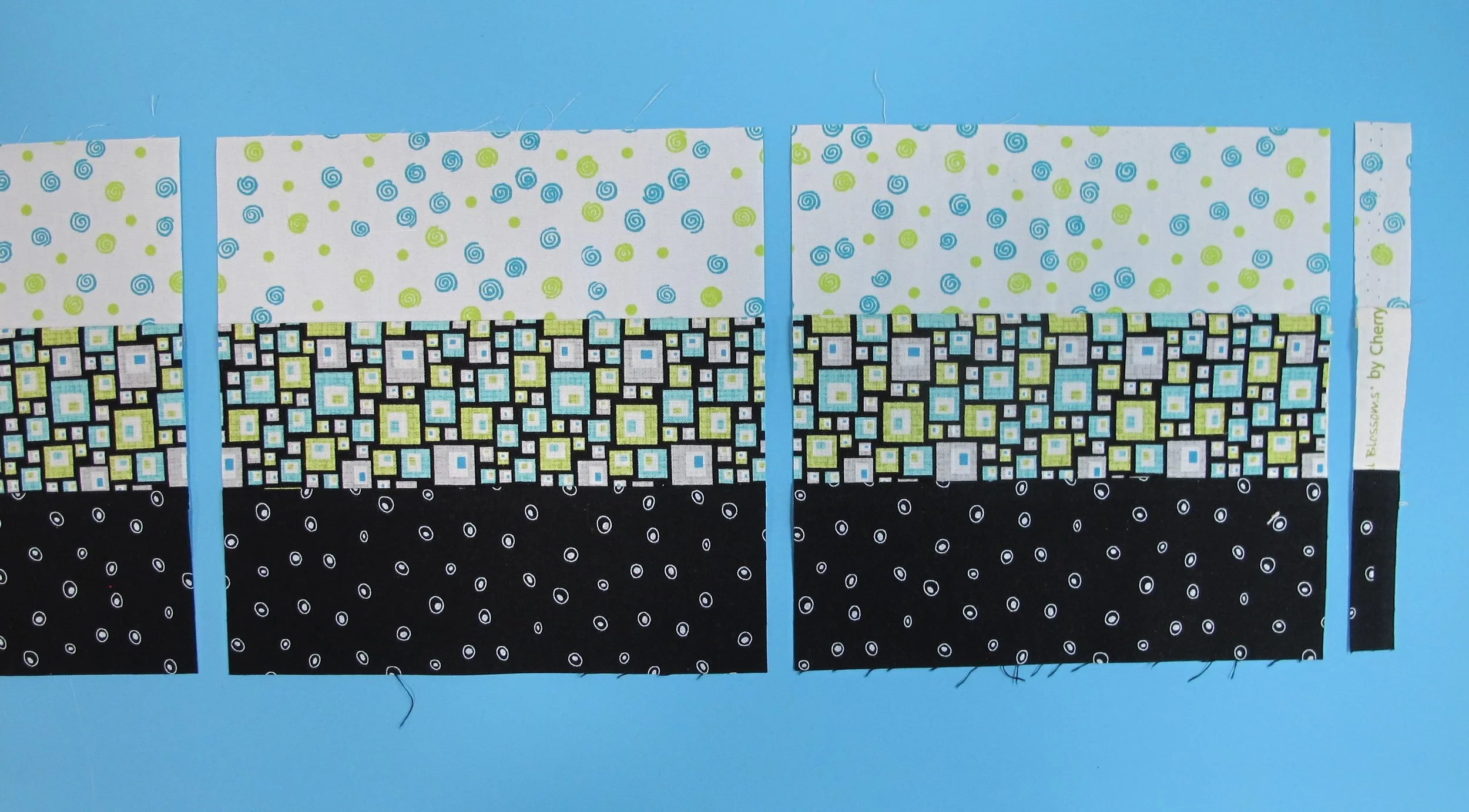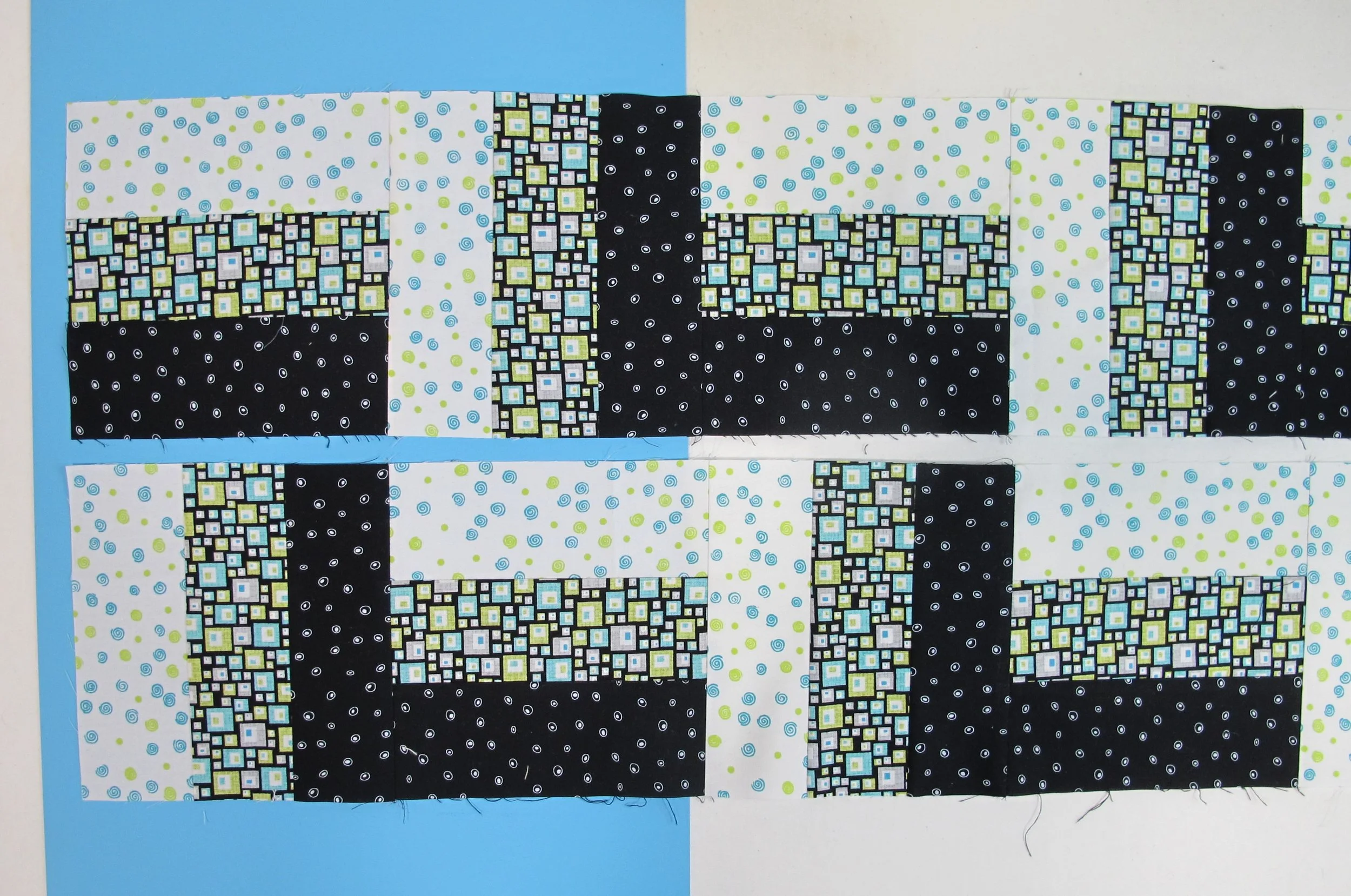Rail Fence Baby Quilt
Rail Fence is a very old, traditional quilt pattern. The majority of old quilt patterns are named for things having to do with the early settlers of North America, whether they're related to farming, travelling, settling or the Bible. Some names are Log Cabin, Road to Oklahoma, Churn Dash, Jacob's Ladder and, of course, Rail Fence.
I never really understood why it was called Rail Fence until I moved to Perth, Ontario, when I was 17 years old and saw the fences dotting the farming countryside there. They were all the old fashioned style using wooden rails and were in a zigzag pattern. I didn't see any fencing like that growing up in northern Ontario where nearly everything had to do with mining and lumber instead of farming. Up there quilt blocks should have had names like Rock Cut and Tree Stump!
This baby quilt can easily be made in a weekend, using only 3 fabrics and simple strip piecing, if you are in need of a quick baby gift.
***scroll to the bottom of the page for a printable PDF
Finished size: 30” x 41” (5 blocks across, 7 blocks down, for a total of 35 blocks)
*** This quilt can be made larger by making more blocks, varying the width of the strips used, or piecing 4 or 5 strips together instead of 3. ***Whatever the width of the strip set used is what the size of the square will be.
Supplies:
light fabric- .45 m (½ yd)
medium fabric- .75 m (1 yd) – this includes .45 m (½ yd) for fence strips and .30 m (⅓ yd) for binding
dark fabric- .45 m (½ yd)
backing- one piece 32” x 43” or larger
batting- one piece 32” x 43” or larger
matching or neutral 100% cotton thread for piecing
coordinating thread for machine quilting
Cutting: if you need some guidance here check out my tutorial
cut six 2 ½” strips from both the light and dark fabrics
cut ten 2 ½” strips from the medium fabric (6 for strip piecing, 4 for binding)
Sewing: scant ¼” seam allowances are used...if you need some guidance for getting a scant ¼” seam check out my tutorial
Stitch a light, medium and dark strip together as in figure 1 (with medium in the centre) and press seams toward the dark fabric (if you need some guidance with pressing check out my tutorial). Repeat with the other 5 sets for a total of 6 strip sets. These strip sets should be 6 ½” wide by the full width of fabric.
Get a straight edge by cutting off the selvedge edge and cut 6 ½” segments from each strip set as in figure 2. You should be able to get six squares from each strip set for a total of 36 squares.
figure 1
figure 2
To create the zig-zag design with the blocks two different rows are needed. Row 1 has the light strip on the top where the first block on the left is positioned and the block next to it has the light strip on the left. Stitch five blocks together alternating the blocks as shown in the photos. Four of these rows are required.
Row 2 has the light strip on the left where the first block on the left is positioned and the block next to it has the light strip on the top. Again, stitch five blocks together alternating the blocks as shown in the photos. Three of these rows are required. ***There will be one block left over. Figure 3 shows positioning of the blocks for both rows.
Press seams toward the plain strip in all strip sets (as shown by the black arrows in figure 4). That way, when block strips are sewn together all of the seam allowances will be nesting together and going in opposite directions making for a flatter quilt top.
figure 3
figure 4
Referring to the photo at the top of the page, starting with Row 1 at the top, lay out the rows one above the other making sure to alternate the two rows ending with Row 1 again at the bottom. Notice that the light and dark strips create a diagonal zig-zag design. Stitch the rows together and press seams in one direction.
Layer the top, batting and backing together using your preferred method, quilt the layers by hand or machine in your chosen design and then bind the quilt using your preferred method. Check out this binding tutorial for one that is done entirely by machine.





